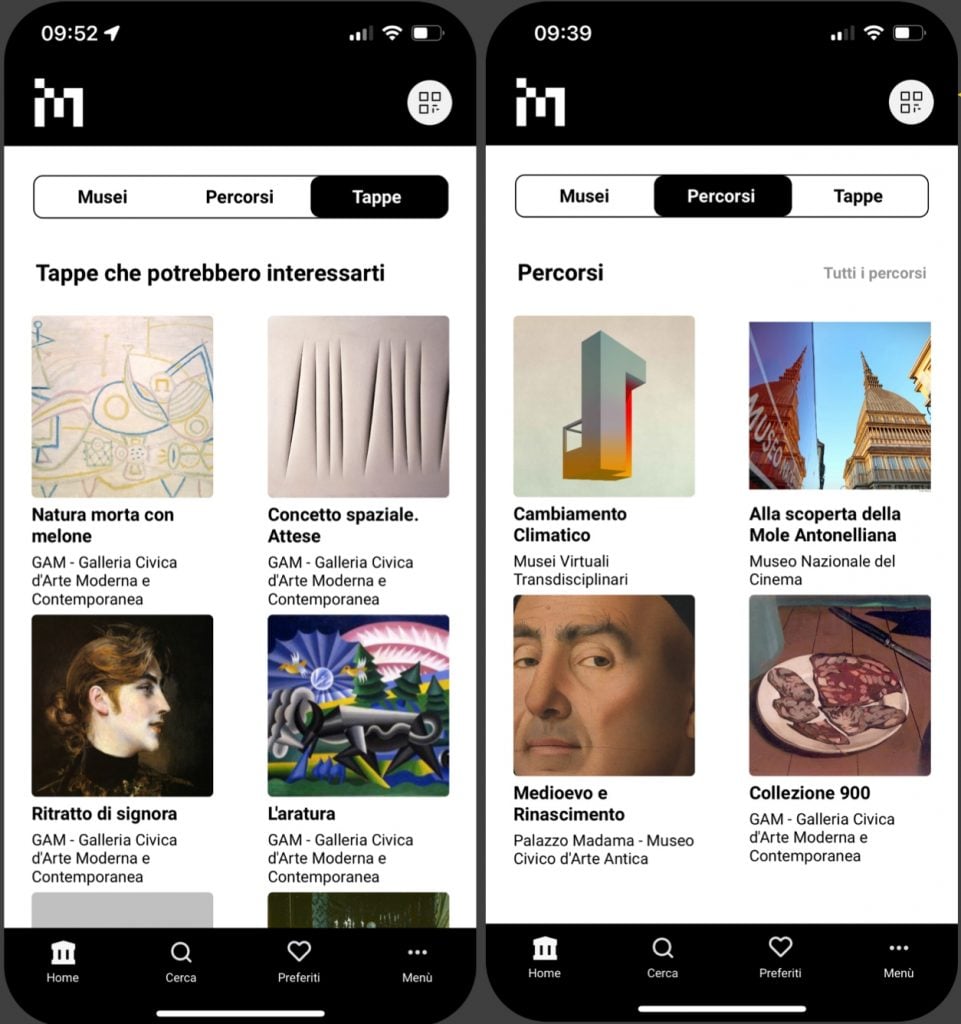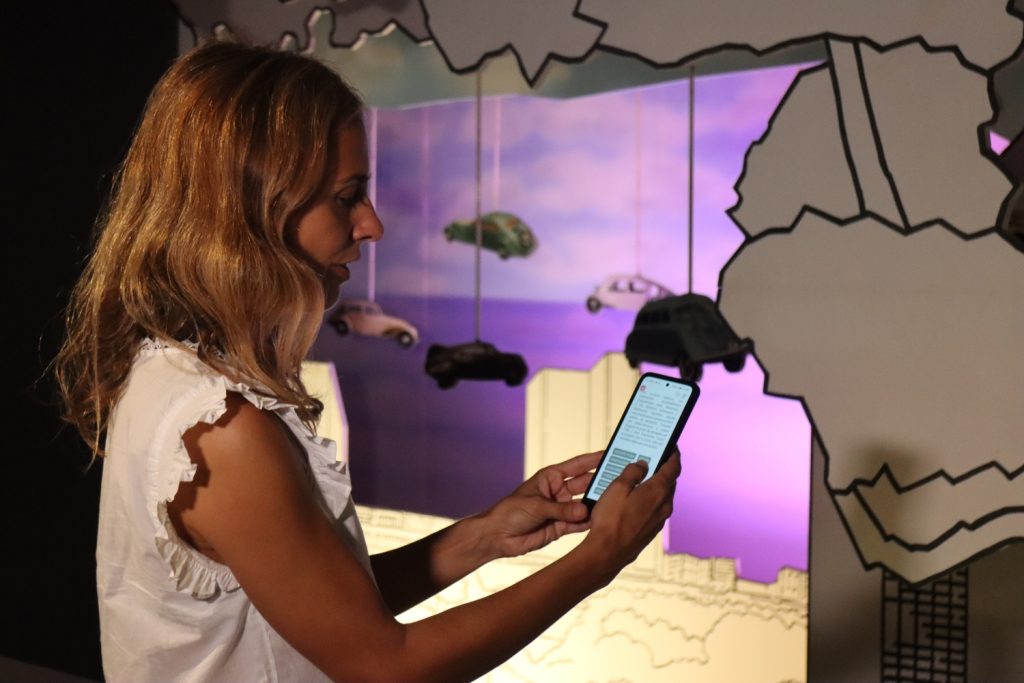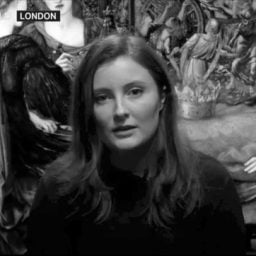A new app offering museum visitors a digitally enhanced experience with A.I.-generated recommendations has been launched in the Italian city of Turin. I-MUSE aims to house a mix of partner museums in one virtual space so that when a user shows an interest in one object, they are offered suggestions about similar objects or exhibition at other institutions. The app’s aim is to engage new audiences and boost footfall at museums.
The recommendations made by the A.I. could depend on various characteristics such as style, period, movement, or subject. For example, if a user is particularly interested in Renoir’s La Baigneuse Blonde (1882) at the Pinacoteca Agnelli, the app might suggest they go see Portrait of a Lady (1889) by Giovanni Boldini, which is at the Galeria d’Arte Moderna (GAM) collections, a 20-minute drive across the city.
“The point is to give visitors extra information that might not be easy to find otherwise,” said Giovanni Mastrobuoni, one of the principal investigators responsible for the project. “Individual museums don’t have an interest in sharing what else individuals might like that is not based in their own building. So the novelty is that we generate these positive spillovers towards other museums.”

Screenshot of I-MUSE app. Photo: Courtesy of Giovanni Mastrobuoni.
By scanning a QR code next to objects and artworks of interest, users can show the app their interests and receive customized suggestions and personalized routes. This information can also be fed back to museums, providing crucial data on their audiences that can be used to tailor the visitor experience. It also provides museums with crucial infrastructure to offer digital services that would otherwise be expensive to develop.
“The app is very democratic, so museums can decide which pieces of art should be featured and what additional information should be made available,” said Mastrobuoni. “They can add audio or video files, which makes it very cheap for smaller museums to set up an audio guide. All they need is a browser [and] all visitors need is a cell phone.”
Another feature that the I-MUSE team are keen to trial is the option for museums to promote upcoming exhibitions via push notifications. “It allows us to run experiments and learn what individuals might like,” explained Mastrobuoni. “For example, we could send some users discounts randomly, and see whether that triggers an increase in demand. It would allow us to estimate demand for museum visits, which is something that we know very little about right now as researchers.”
Additionally, the A.I.’s grouping of works from across disparate institutions according to style or subject has allowed the app to make its own virtual exhibitions that bring together works that are relevant to each other but might never otherwise be seen together in real life. It is as though an artwork can suddenly be two or more places at once. So far, 20 virtual museums have been built, connecting works that relate to each other on themes like the climate crisis, time, and movement.
The app was launched during “A night at the museum,” a regular evening event held by the Club Silencio Association to encourage young people to visit local museums, and has so far been downloaded around 10,000 times. It currently serves eight partner museums: the Pinacoteca Agnelli, Egyptian Museum, the Royal Palace of Venaria Reale, Palazzo Madama, GAM-Civic Gallery of Modern and Contemporary Art, Museum of Oriental Art, the National Cinema Museum, and the National Museum of Automobiles. Over the next year, I-MUSE hopes to serve more museums in the wider region of northern Italy and spend more on marketing.
The team of researchers who brought the idea to fruition was led by Mastrobuoni and Nadia Campaniello, both economics professors at the University of Turin. They worked in collaboration with computer scientist Giovanni Squillero and professors of architecture and design Sergio Pace and Manfredo di Robilant, all from the Polytechnic of Turin.
I-MUSE is free to download via iOS or Android.
More Trending Stories:
Is There a UFO in That Renaissance Painting? See 7 Historical Artworks That (Possibly) Depict Close Encounters With the Third Kind
What I Buy and Why: Art Entrepreneur Hélène Nguyen-Ban on Her Original ‘Art Crush’ and Owning a Half-Ton Book by Anselm Kiefer
Christie’s 20th/21st Century Evening Sale Notches Steady Results, a Feat in the Current Tepid Art Market
Four ‘Excellently Preserved’ Ancient Roman Swords Have Been Found in the Judean Desert
An Early Edition of an ‘Unhinged’ Christopher Columbus Letter Outlining What He Discovered in America Could Fetch $1.5 Million at Auction
An Elderly Couple Sold a ‘Worthless’ African Mask for $157. Now They Are Suing the Buyer Who Auctioned It for $4.4 Million
An English Woman Paid $100 for a Sculpture at a Trunk Sale That Turned Out to Be an Elisabeth Frink Work Worth $72,000
Three Artists, Immersed In Far-Flung Residencies, Offer Unique Takes on Human Truths at New York’s International Center of Photography
What I Buy and Why: British Artist Glenn Brown on His Historical Collection and the ‘Ugly Duckling’ He Bought by Accident







